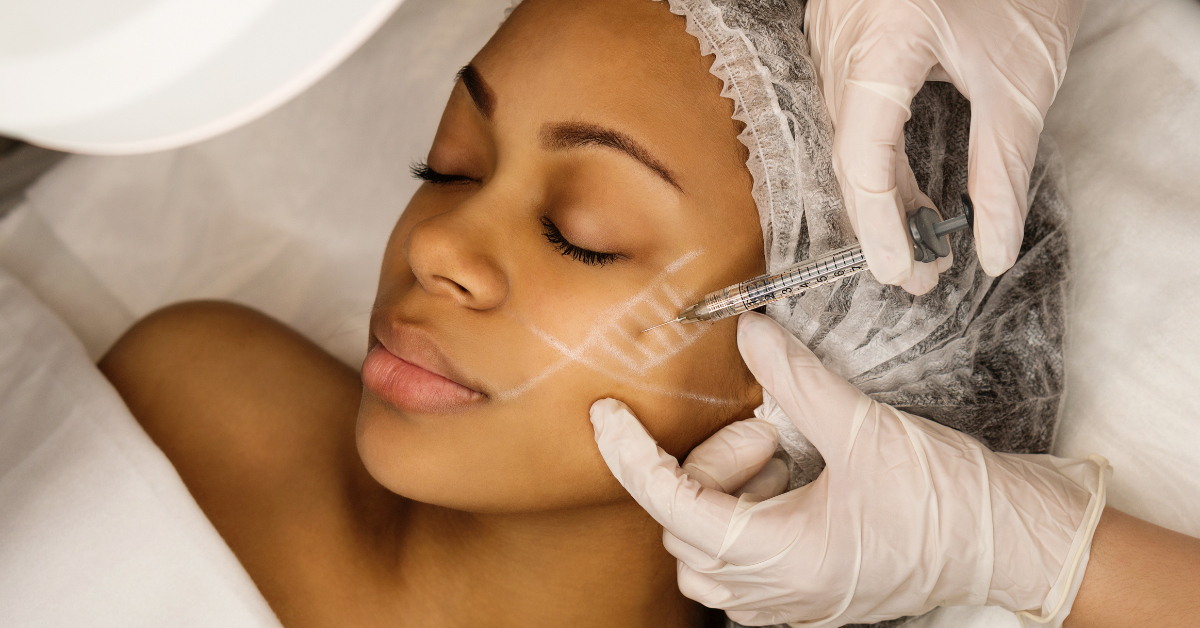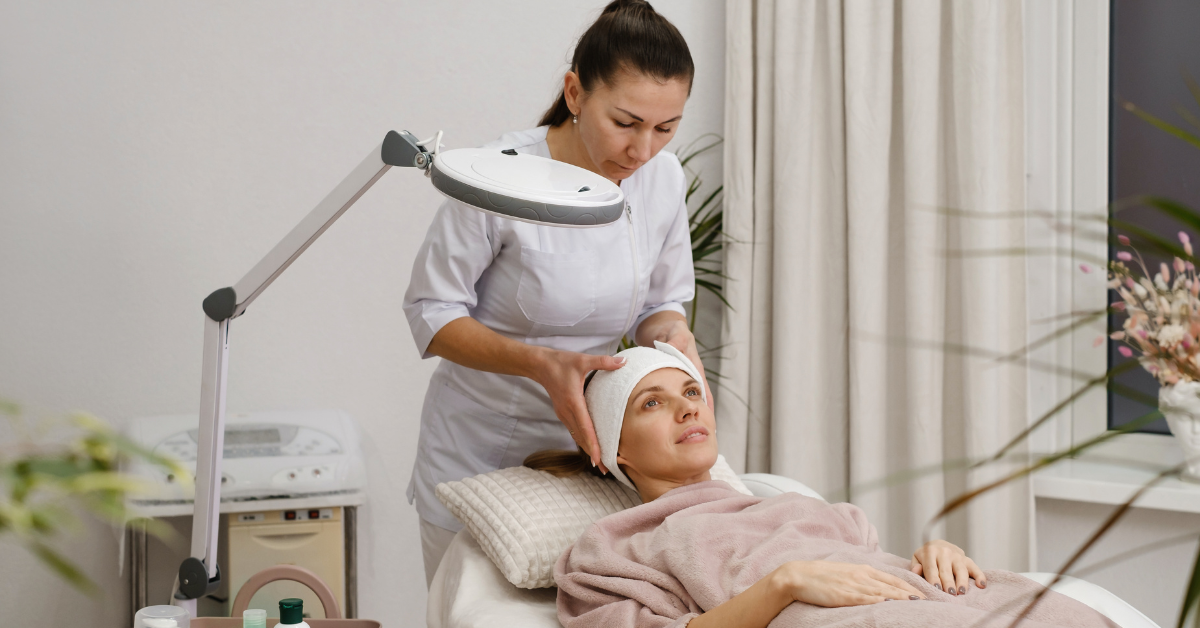
Aesthetic Nurse Practitioners (ANPs) hold a distinctive position in healthcare, blending medical expertise with an artistic touch to enhance the beauty and well-being of their patients.
This post reviews the fundamental aspects of the role and responsibilities of Aesthetic Nurse Practitioners, diving into the unique skills, ethical considerations, and patient-centered approach that define this specialized field.
To gain insight into the role of ANPs, we also spoke to Robyn Luna, a board certified Nurse Practitioner, owner of Luna Skin, and NP influencer specializing in aesthetics.
Read on to learn more about Aesthetic Nurse Practitioners!
The Rise of Aesthetic Medicine
In recent years, the aesthetic industry in the United States has experienced a surge in demand for non-invasive procedures, prompting the rapid growth of aesthetic medicine across the nation. This trend reflects a shifting cultural emphasis on beauty and wellness, where individuals increasingly seek aesthetic treatments that enhance their appearance without the need for surgical interventions.
This can be attributed to various factors, including advancements in technology, increased accessibility to aesthetic treatments, and a growing awareness of the importance of self-care and preventive measures. Consumers are increasingly turning to non-invasive procedures due to the minimal downtime, reduced risks, and natural-looking results compared to traditional surgical interventions.
Luna believes the heightened awareness of aesthetics is due to a multitude of factors.
“I think we commonly hear that the recent surge of medical aesthetics came after Covid,” she said. “Sure, there were a lot of people having to do Zoom calls and see themselves more often. But there were also huge amounts of people who were alone by themselves, and I believe this uncovered a heavy feeling of self-awareness. However, I also believe that social media has uncovered medical aesthetics for so many, and they get to see in real-time what these procedures look like and what kind of treatments are available to them.”
What Makes Aesthetic Nurse Practitioners Unique?
Aesthetic Nurse Practitioners focus on enhancing and maintaining the aesthetic appearance of their patients. ANPs undergo specialized training to offer a range of non-surgical aesthetic procedures aimed at rejuvenating and enhancing physical appearance.
This role requires a unique combination of clinical skills, aesthetic sensibility, and a commitment to patient satisfaction.
Luna always wanted to work in the medical aesthetics field and was inspired to become an Aesthetic Nurse Practitioner during her training.
“Initially, I thought my journey was going to start in plastic surgery,” said Luna. “It was only upon sitting with the surgeon that I met a nurse who was creating amazing art with fillers, and I knew immediately that becoming a nurse injector was what I was designed to do. For me, the ability to enhance beauty for everyone and create both an internal and external peace for each patient on very different levels makes me very proud that this is my career.”

Core Responsibilities of Aesthetic Nurse Practitioners
Aesthetic Consultations
ANPs conduct thorough assessments to understand patients’ aesthetic concerns, medical history, and expectations. This forms the foundation for developing personalized treatment plans.
ANPs also educate patients on available aesthetic procedures, discussing potential risks, benefits, and expected outcomes to ensure informed decision-making.
Non-Surgical Aesthetic Procedures
Aesthetic Nurse Practitioners often perform non-surgical procedures such as:
-
Injectables (Botox and Dermal Fillers): ANPs administer injectables to address wrinkles, fine lines, and volume loss, utilizing a keen understanding of facial anatomy for precise and natural-looking results.
-
Laser and Light Therapies: ANPs perform or oversee laser treatments to address concerns such as skin rejuvenation, pigmentation issues, and hair removal.
-
Chemical Peels: ANPs apply chemical peels to enhance skin texture, reduce fine lines, and address pigmentation irregularities through controlled exfoliation.
-
Platelet-Rich Plasma (PRP) Therapy: ANPs use PRP derived from the patient’s blood to stimulate collagen production, promoting skin rejuvenation and hair restoration.
Patient Safety and Ethical Considerations
ANPs must ensure that patients fully understand the procedures, potential risks, and expected outcomes before obtaining informed consent. They adhere to specific ethical guidelines and regulatory standards, prioritizing patient safety and well-being in all aspects of aesthetic practice.
Given the evolving nature of aesthetic treatments, ANPs also engage in ongoing education and training to stay abreast of the latest techniques, safety protocols, and industry advancements.
Customized Treatment Plans
Aesthetic NPs create customized treatment plans tailored to each patient’s unique facial anatomy, aesthetic goals, and preferences.
They often combine different aesthetic modalities to achieve comprehensive and harmonious results, addressing multiple concerns in a single treatment plan.
Patient Communication and Satisfaction
Effective Communication is essential for Aesthetic Nurse Practitioners, as they must communicate transparently with patients, managing expectations and fostering open dialogue throughout the treatment process.
ANPs prioritize patient satisfaction, monitoring outcomes and making adjustments when necessary to achieve optimal results.
Key Competencies for Aesthetic Nurse Practitioners
Aesthetic Eye and Artistic Sensibility
ANPs possess a detailed knowledge of facial anatomy, allowing them to identify optimal injection sites and create balanced, aesthetically pleasing results.
The ability to assess facial features, proportions, and symmetry is essential for ANPs to make informed decisions and achieve natural-looking outcomes.
Technical Proficiency
ANPs master precise injection techniques, ensuring the accurate placement of neurotoxins and dermal fillers to achieve desired results. They also must be extremely proficient in handling and operating various aesthetic devices, such as lasers and advanced skincare technologies.
Patient-Centered Care and Professional Integrity
ANPs must approach aesthetic care with empathy, recognizing the personal nature of aesthetic concerns and the impact they can have on patients’ self-esteem. They can empower patients with knowledge, helping them make informed decisions about their aesthetic treatments and aftercare.
ANPs also must uphold ethical standards, providing honest recommendations, avoiding unnecessary procedures, and prioritizing patient safety.
Luna believes in this compassionate and ethical approach to aesthetics.
“I personally feel that Aesthetic Nurse Practitioners have a very unique role within the community because we may be the first line of contact for somebody who is dealing with a mental health issue,” she said. “I appreciate that communities all over the US are becoming more aware that mental health issues are very prevalent, and that it can manifest in many ways. It’s important for an Aesthetic Nurse Practitioner to recognize that and ensure realistic expectations as well as provide a proper diagnosis for each and every patient, rather than capitalizing off of it.”
ANPs must also maintain patient confidentiality, fostering trust and creating a safe space for open communication.

Advancements in Aesthetic Nursing
Technology Integration
ANPs stay informed about technological advancements, incorporating innovative treatments and devices into their practice. They also utilize electronic health records and digital imaging to document patient progress and ensure accurate treatment planning.
Evolving Treatment Modalities
ANPs explore and integrate new aesthetic procedures as they emerge, expanding their
repertoire to offer the latest and most effective treatments. The trend towards combining multiple aesthetic modalities continues to evolve, allowing ANPs to create comprehensive and synergistic treatment plans.
Advice for Aesthetic Nurse Practitioners Starting Their Own Practice
We asked Luna if she had any advice for ANPs looking to start an independent practice. She recommended a thoughtful, measured approach.
“My advice would be to just go for it but to also start slow,” she replied. “It’s not a bad idea to have a job that provides steady income as you’re building your book of business. The first thing you should do is hire a CPA and a lawyer. One of the most important pieces of advice that I can give any business owner in Aesthetics is that you don’t need machines in order to be successful. If you try to do it all, you become the master of none.”
Conclusion
Aesthetic Nurse Practitioners play a distinctive role in the healthcare landscape, merging clinical expertise with artistic sensibility to address patients’ aesthetic concerns.
Their responsibilities extend beyond the technical aspects of procedures, encompassing personalized care, ethical considerations, and ongoing professional development. As the field of aesthetics evolves, ANPs remain on the front lines, embracing innovation and advancements to provide safe, effective, and patient-centered aesthetic care.
By combining the art and science of aesthetics, Aesthetic Nurse Practitioners contribute to enhancing both the physical appearance and overall well-being of their patients.